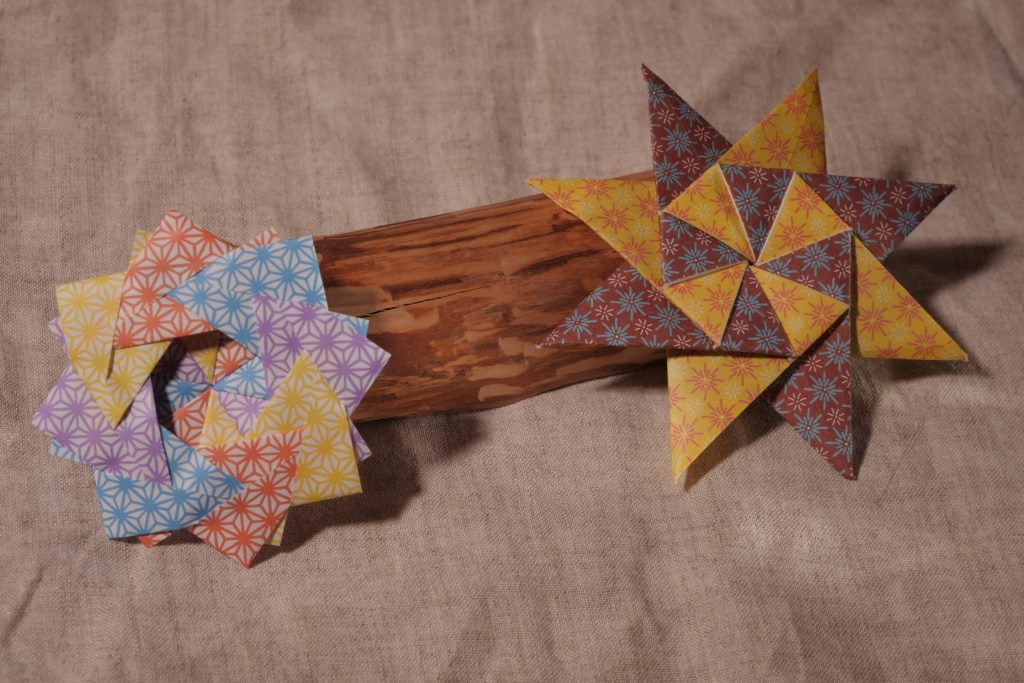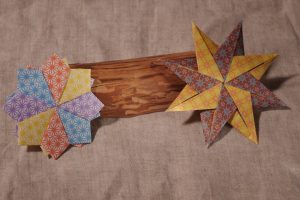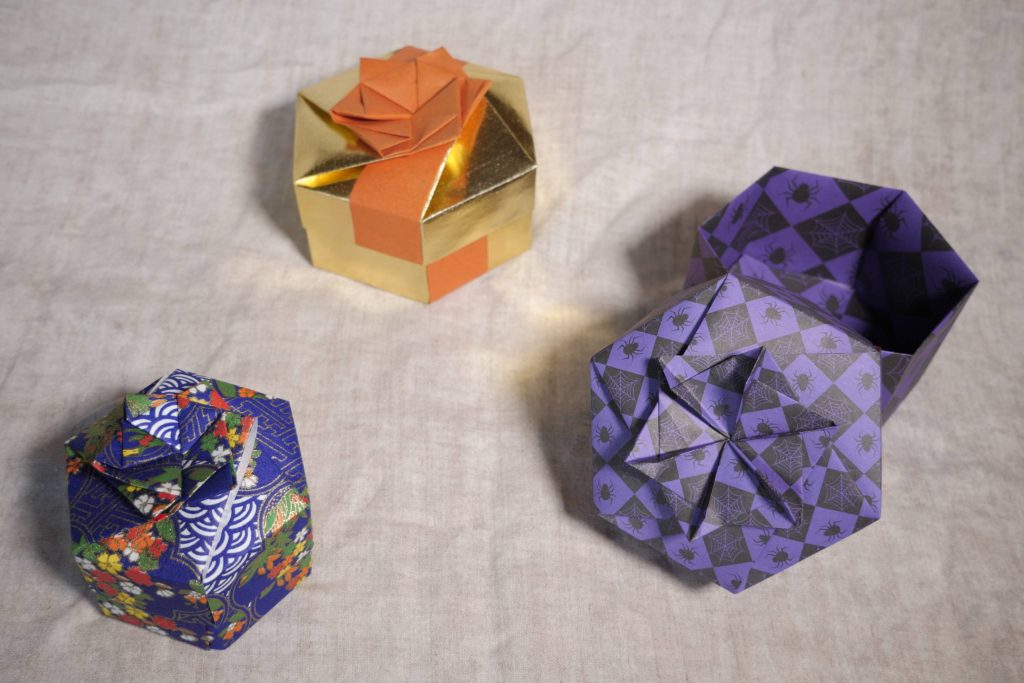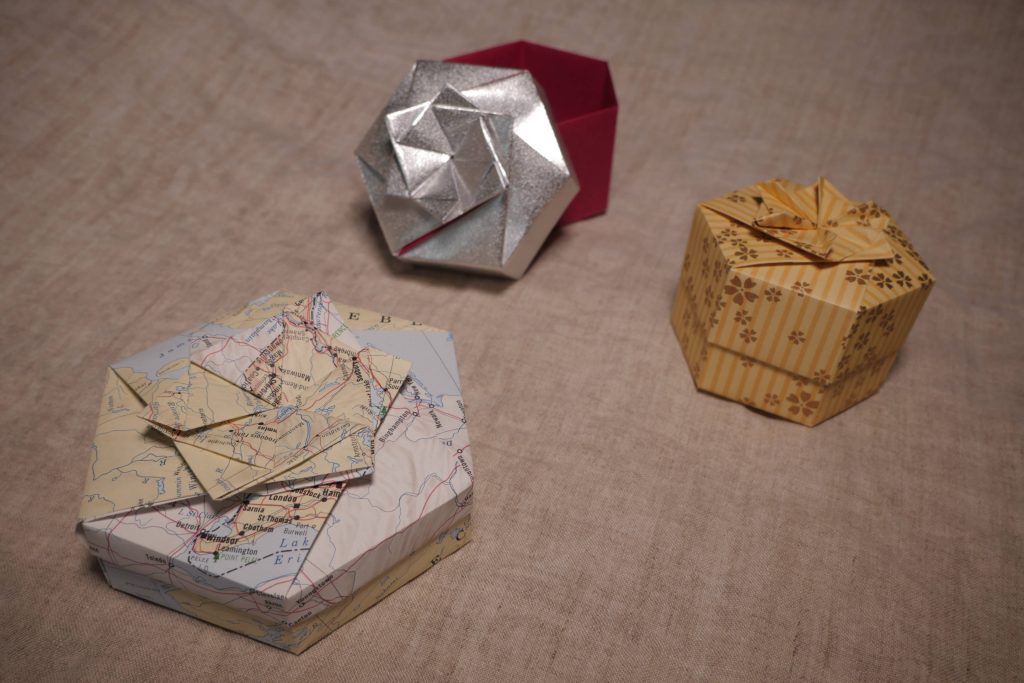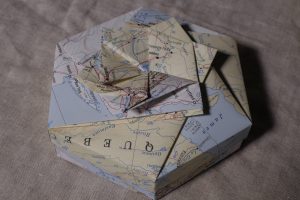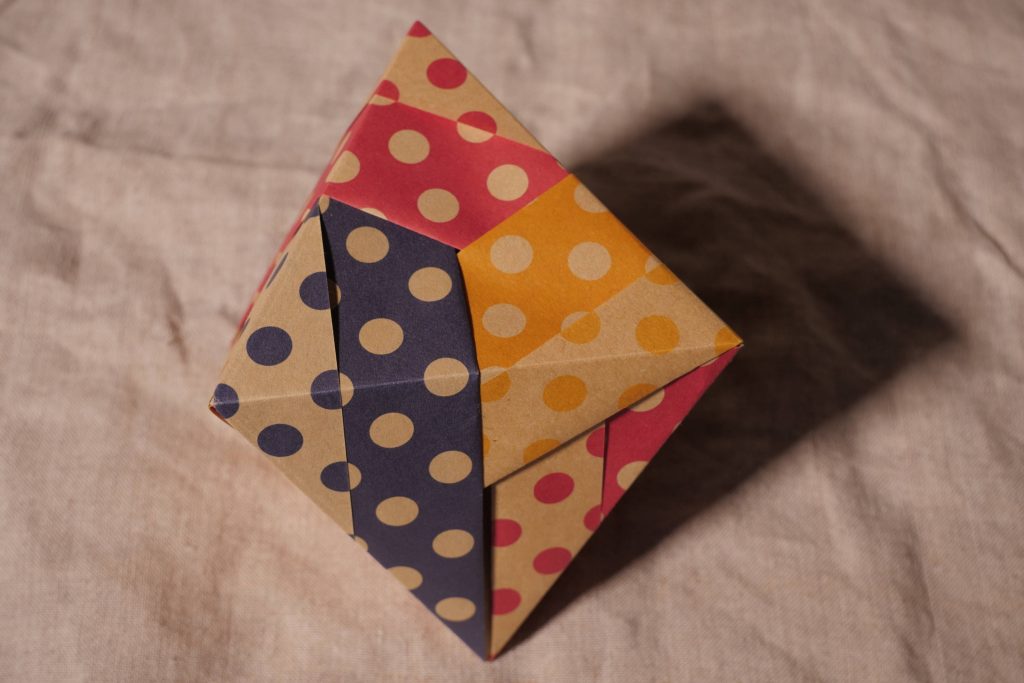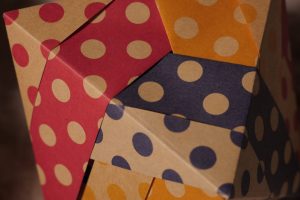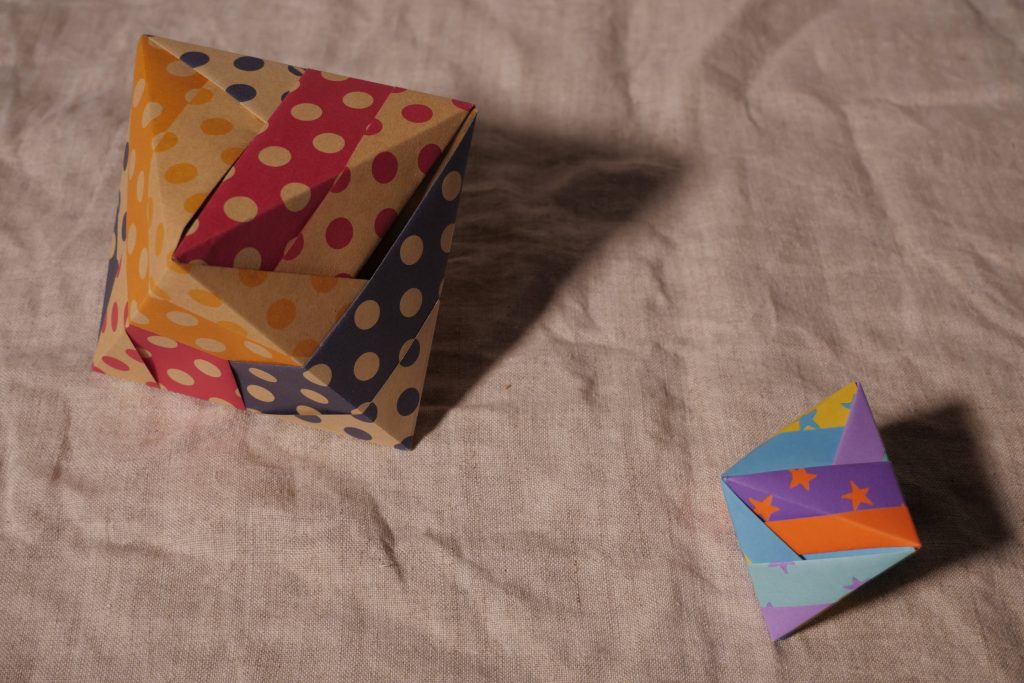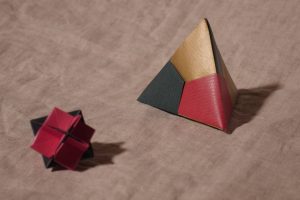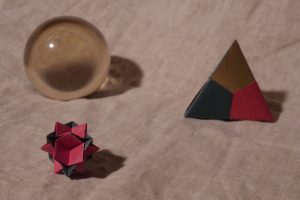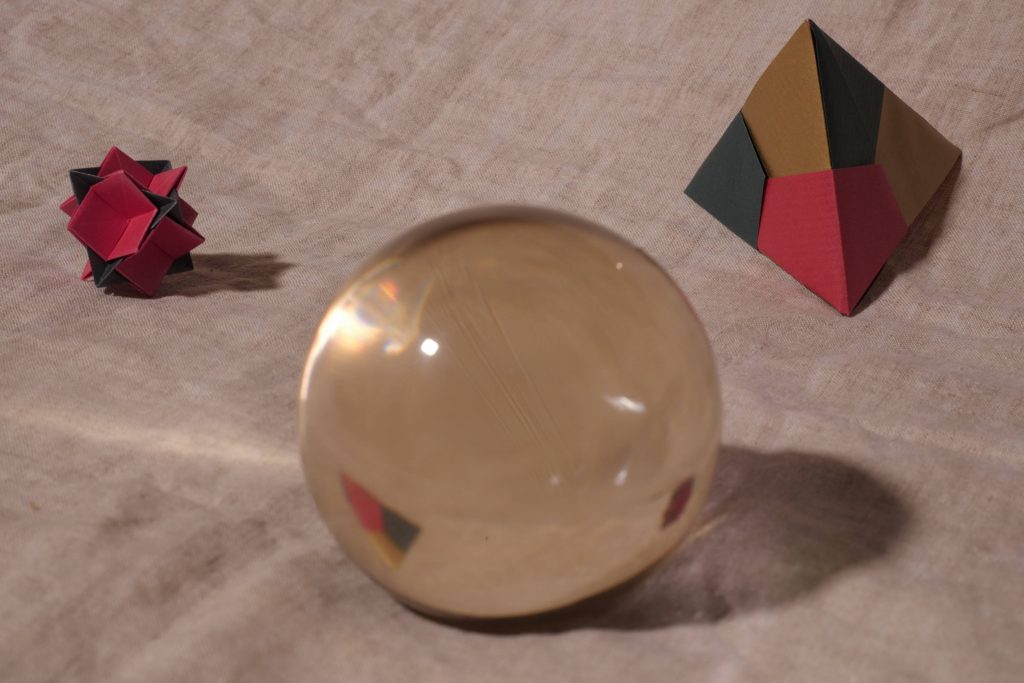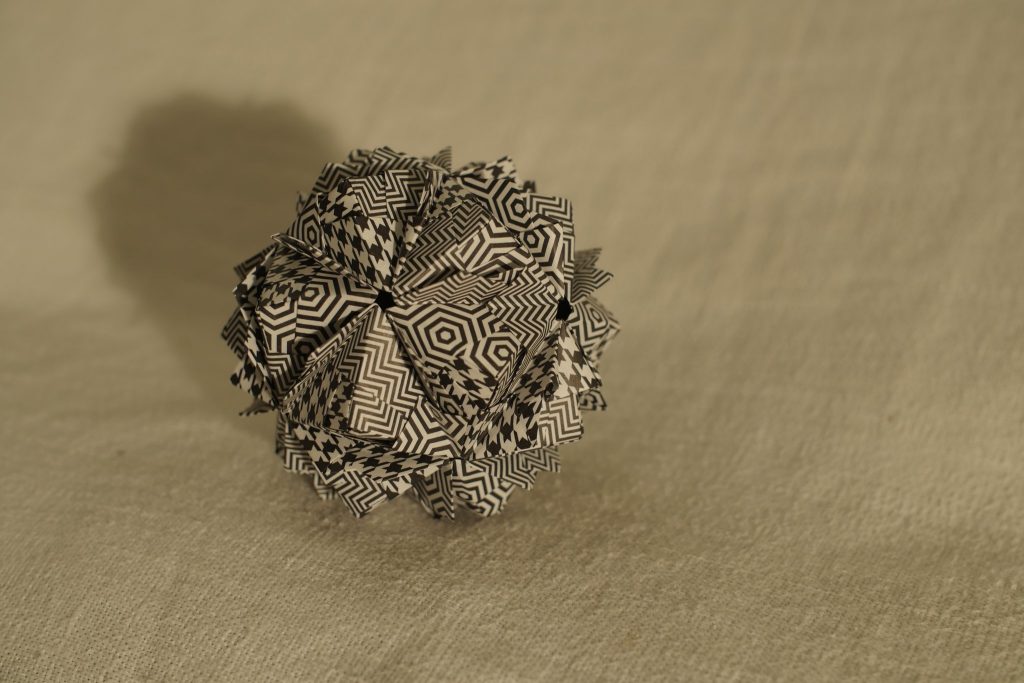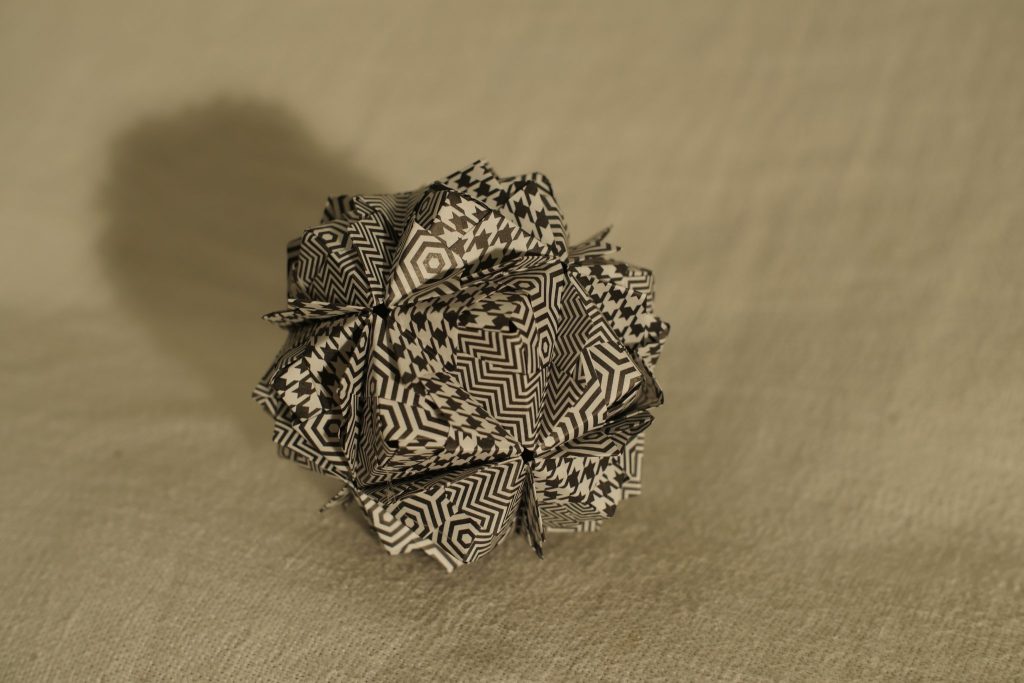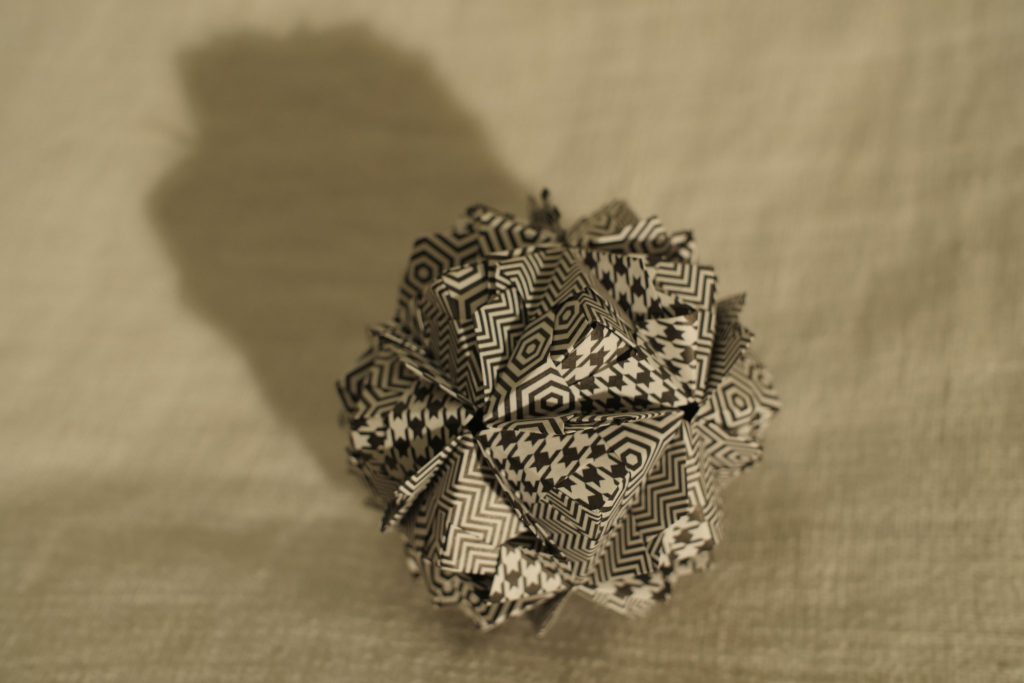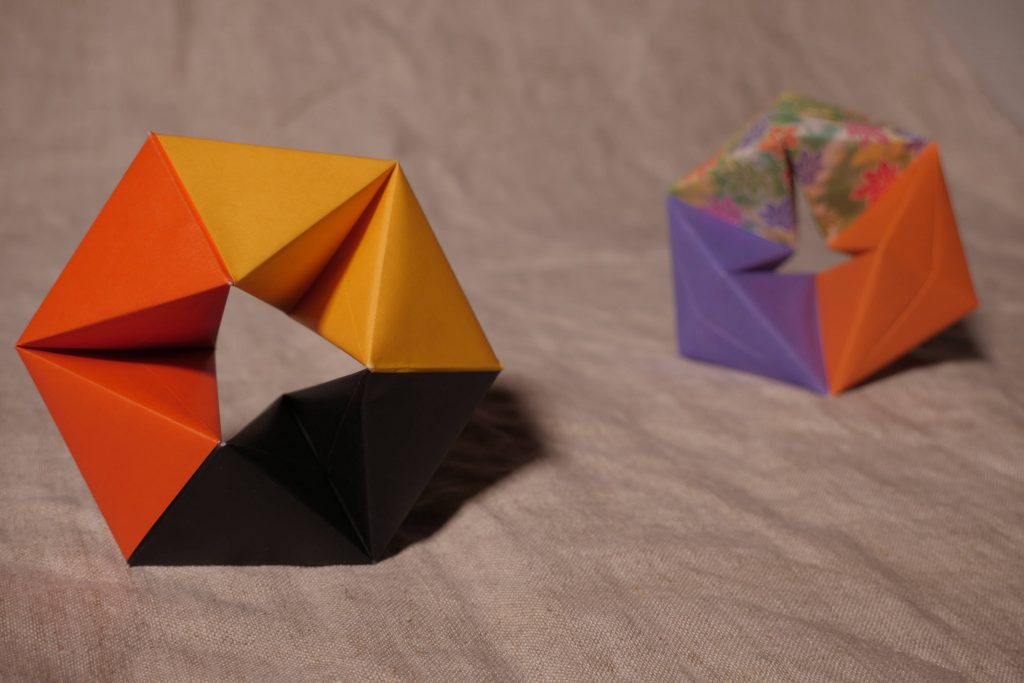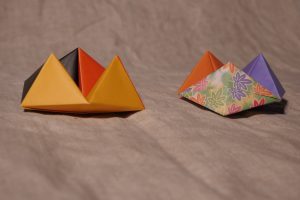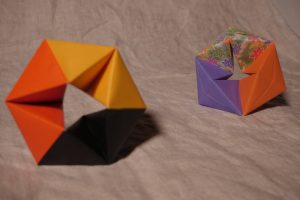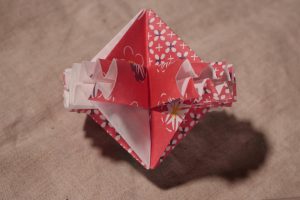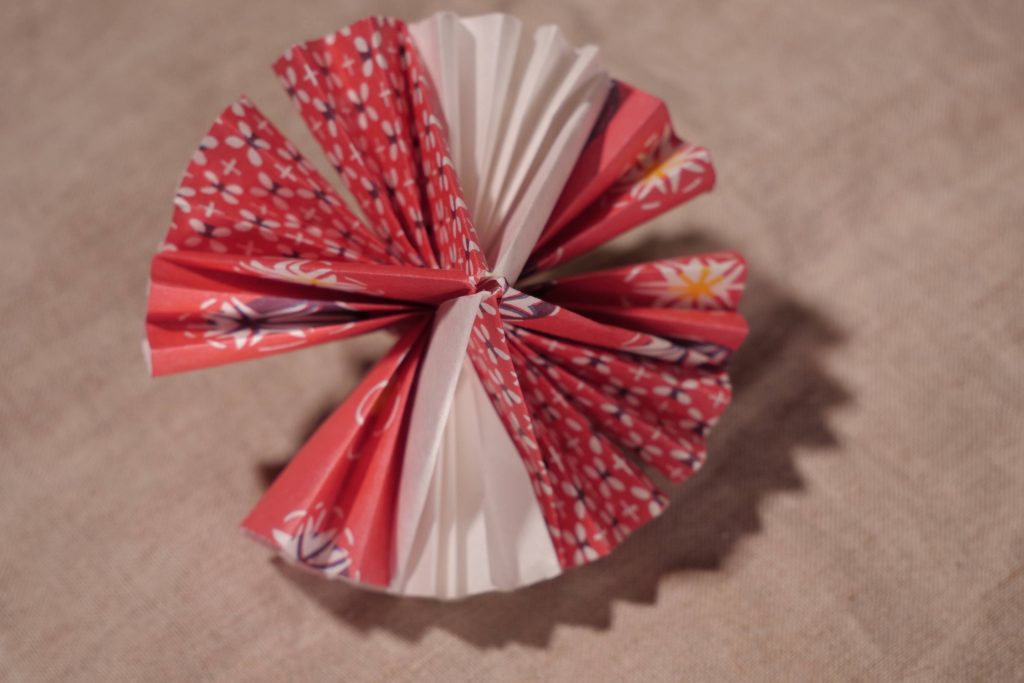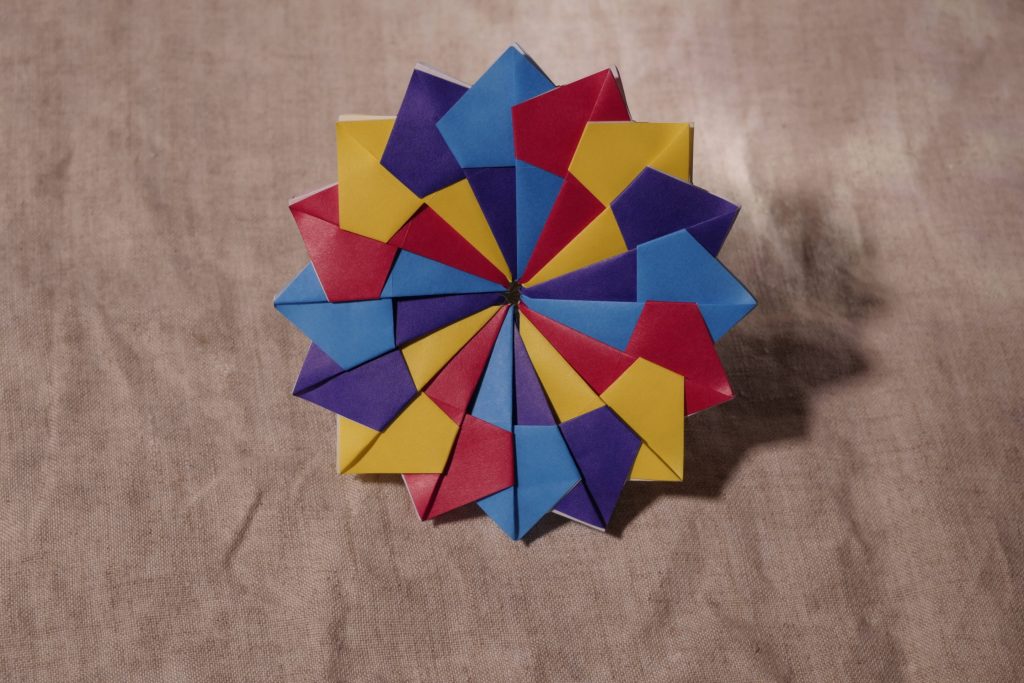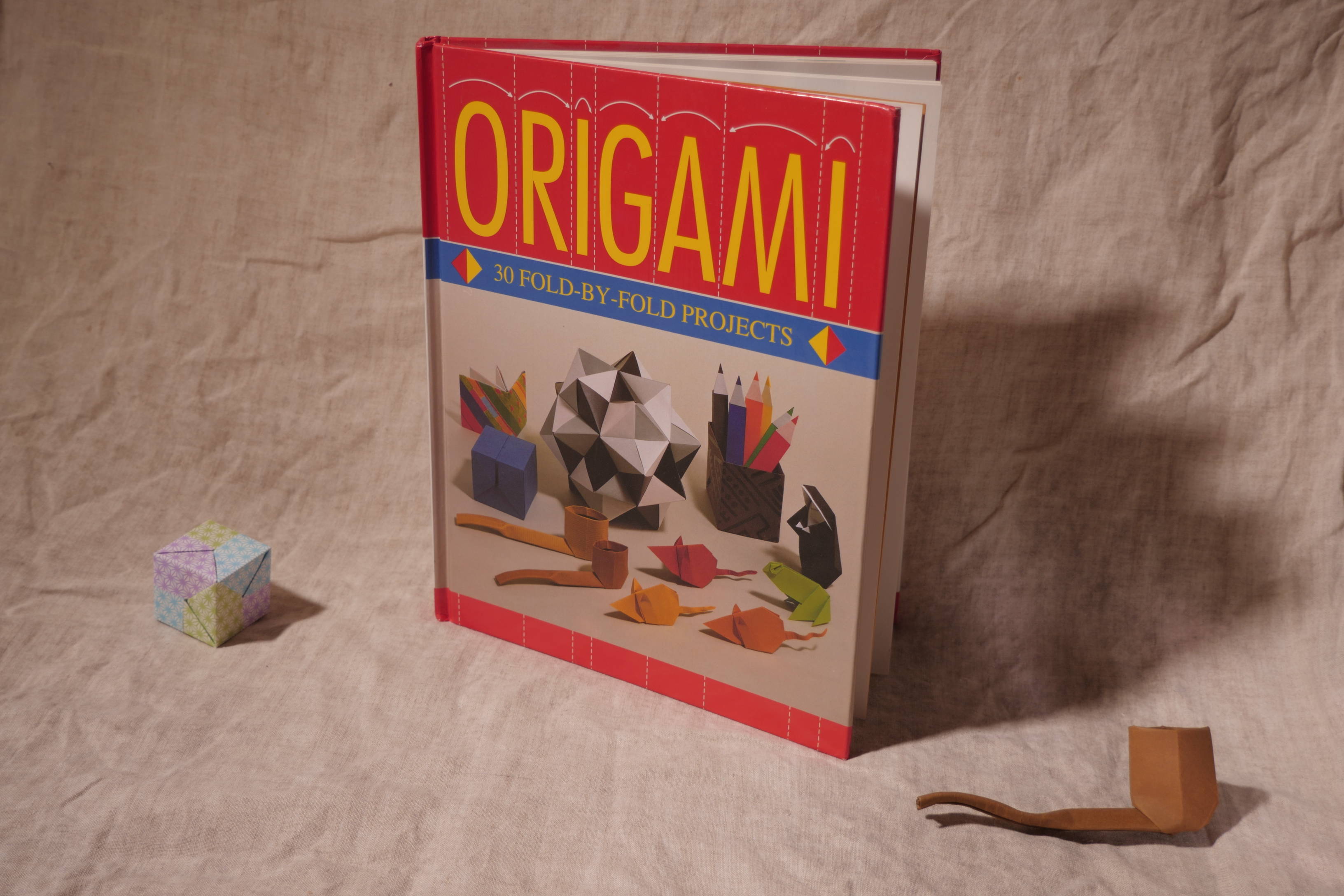These gorgeous boxes can be found in a japanese book, ISBN 9784416307069, page 66 and further. They’re all the same base model, only the decoration part changes.
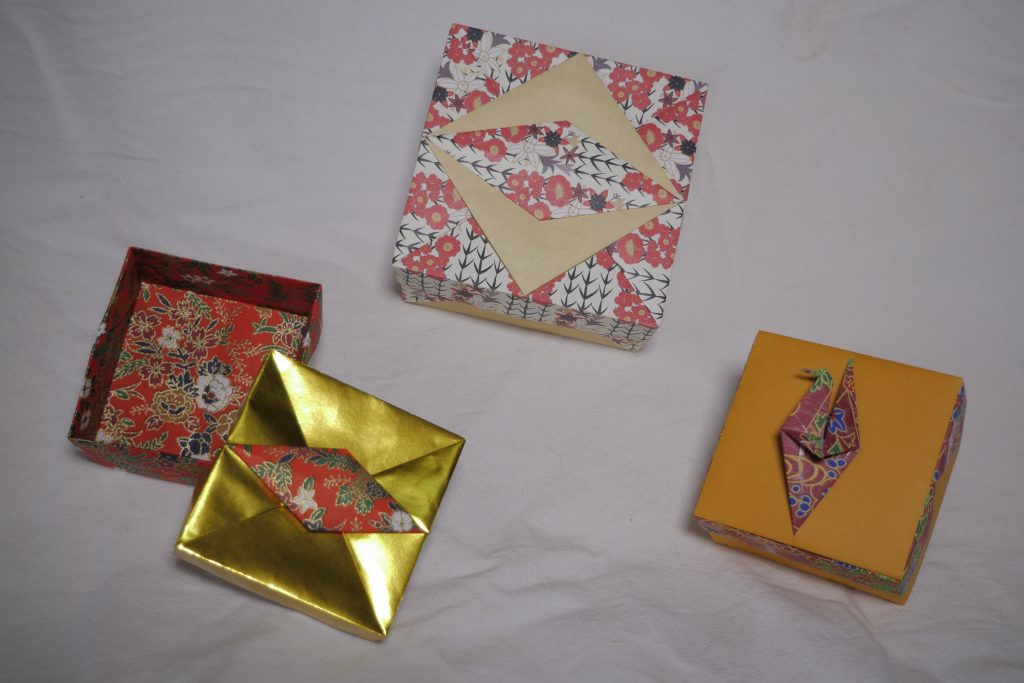
As you can see, I really like this model, and folded a huge serie of them. On the left, folded from japanese washi chiyogami (this one) (two 15 cm sheets on the bottom + a matching 7.5 cm for the decoration) and one sheet of gold foil paper 15 cm for the lid. On the right, yellow Tant paper (2 sheets on bottom + 1 under the crane) and another japanese washi chiyogami, one sheet 15 cm for the lid and another for the crane (not sure about the size).
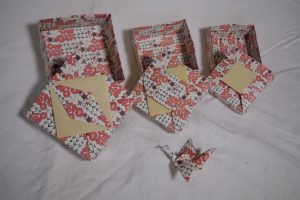
Here you can see I played nesting boxes with different decorations. People loved opening them and discovering the next! The crane with wide tail is on page 63.
The paper is from a nuinui pack, 20, 18 and 15 cm (double-sided, the cream color is the other side). It’s great to have the same pattern in different sizes, for the nesting :)
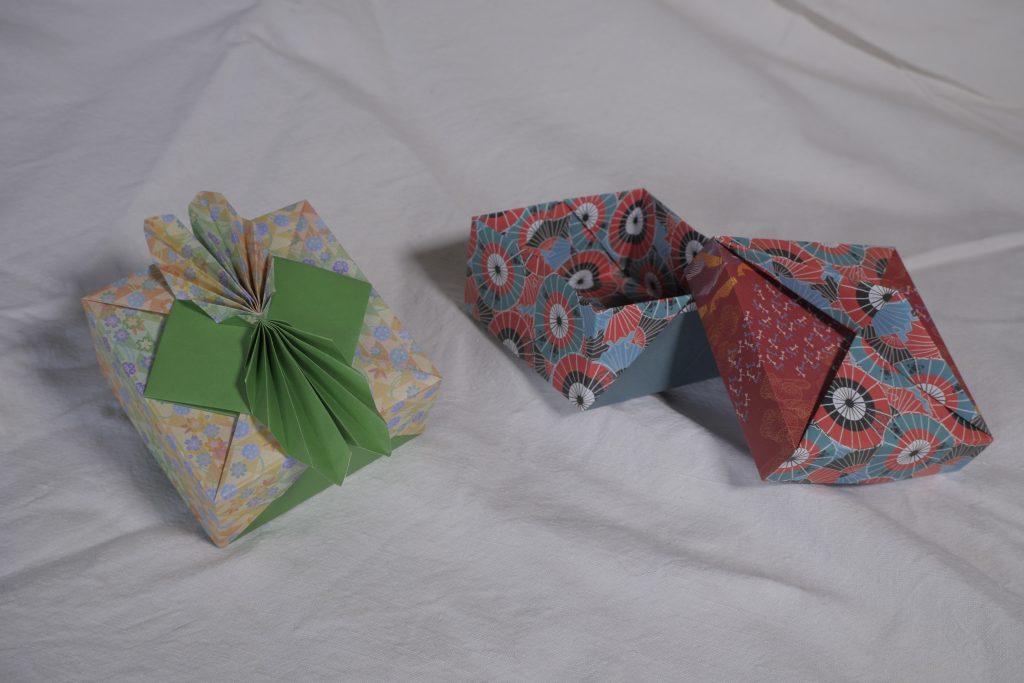
The left box is double-sided chiyogami 15 cm from toyo (a pack of 30 patterns, 120 sheets). I love the little leaves.
The paper for the box on the right comes from a nuinui pack again. It’s not so clear on the picture, but the decoration is actually a handle on this one.

